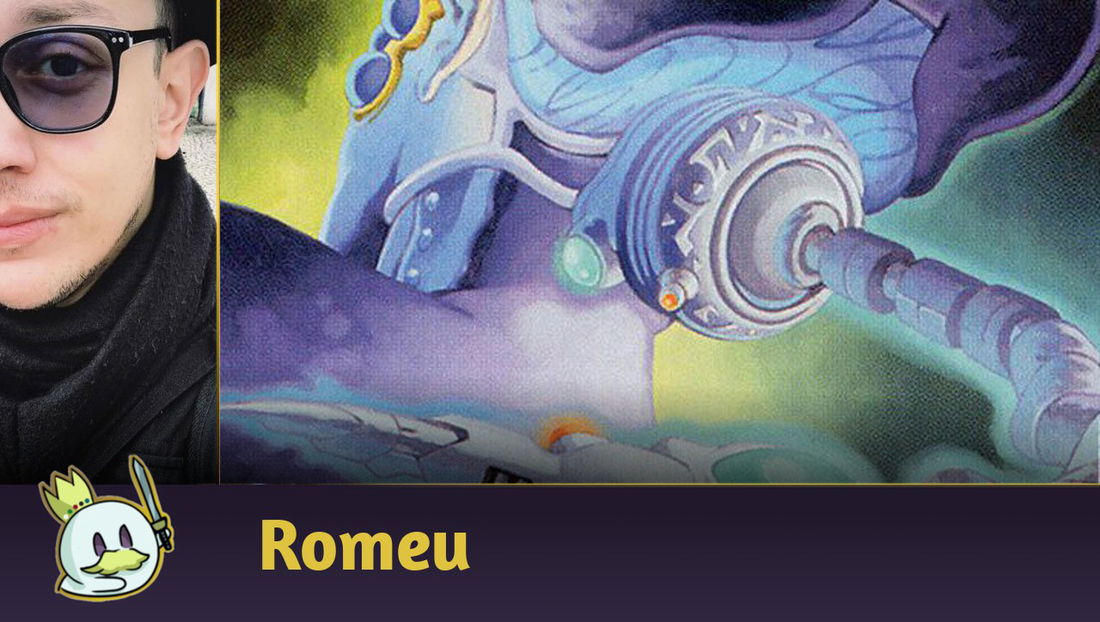About a month ago, an uncommon card from Outlaws of Thunder Junction caused a stir in Standard tournaments when players combined it with a core of permanents and spells that have powerful ETB effects, giving rise to the archetypes known as Bounce, first in Esper (

Now, not only are Bounce decks the most statistically efficient strategies in Standard, but they have also elevated, tournament after tournament, the position of one of the most played archetypes in the format, and one that many strategies don't have good enough answers to deal with. The conversation among players has slowly shifted from how to beat Bounce to "discard should be nerfed" or, in some cases, "This Town Ain't Big Enough should be banned".
Ad
But, after all, are we really facing Standard's new nemesis with the power to take away the format's potential for diversity? Or is the Metagame so addicted to quick answers and solutions to the format's problems that players are still unable to adapt to a new emerging strategy despite the available answers?
The Case of Bounce Decks
Bounce is a strategy widely known in TCGs for years and is not very different in Magic from Blink archetypes, where the goal is to extract the most value from your cards by returning them to your hand or reusing them directly from the battlefield. This strategy is also known in other games and was considered quite troublesome in Marvel Snap for some time.
Bounce's history in Magic goes back more than ten years, and its greatest competitive exponent and the one that most closely compares to Standard's new nemesis today came from Pauper: the commons format has an archetype that reuses ETB effects with creatures that return permanents to the hand for over ten years, and the best-known iteration of this archetype today is Boros Synthesizer, currently focused on a Mardu 
The Synthesizer's plan involves using Kor Skyfisher and Glint Hawk to return permanents like Experimental Synthesizer and Refurbished Familiar to the hand and play them again to extract value from their ETB effect. Its origins date back to around 2014, when it was born as a response to Mono Blue Delver.
It's easy to see the similarities between Standard Bounce decks and their Pauper counterparts: Nurturing Pixie and Fear of Isolation are, respectively, Glint Hawk and Kor Skyfisher, and cards like Hopeless Nightmare are to it, just as Refurbished Familiar is to the commons format.
However, Mardu Synthesizer doesn't seem to me to be the most comparable variant to Standard Bounce decks because the individual quality of the cards in the format is noticeably better. It would be necessary to go back a little further in time, to a version that is now banned in Pauper:
All That Glitters was broken. If Cranial Plating was the first card banned in the format, it didn't make sense for an Aura-shaped Cranial Plating to be acceptable.
First, obviously, players took advantage of the enchantment in different Affinity variants, but it soon became clear that these decks ran out of gas quickly, and it was better to look for an archetype that could better counter the Metagame's responses - this was Boros Glitters, which gave Boros Synthesizer a one-hit kill with All That Glitters while maintaining all the attrition that made the archetype famous. The enchantment alone gave the archetype something it had always lacked: a fast clock.

That's where Stormchaser’s Talent comes in. In theory, this enchantment creates a nerfed Monastery Swiftspear token for one mana, and the potential to reuse it to create more tokens and still use This Town Ain’t Big Enough with one of its levels grants more range and a clock that turns Esper Bounce into a very efficient Midrange with Tempo plays that pressure even the fastest Aggros if they can’t outrun them - add Nowhere to Run and Hopeless Nightmare to the list of other cards that return to hand, and it becomes very difficult to outrace them.
Ad

Finally, there’s the problem with This Town Ain’t Big Enough: it’s too efficient because it’s too flexible. We can use it to bounce two cheap permanents and play them again, bounce a Stormchaser’s Talent and an opponent’s creature to get blockers out of the way, remove tokens from play, protect our cards from sweepers, among other options that make it one of the most powerful cards of the current Standard season.
And in the middle of this mess, there is another important factor.
Not every Bounce deck is equal.
The Esper versions are more famous because they came first, and their game plan is more straightforward: their skill ceiling is theoretically lower because the idea involves playing enchantments, returning them to hand, pressuring with Optimistic Scavenger and Stormchaser’s Talent and winning the game. Their sideboard choices are complex, but the deck’s focus is well-directed - theoretically, it’s easier to respond too.
Dimir Bounce, on the other hand, flirts so much with Dimir Midrange that it’s challenging to know, in the first few turns, which list you’re facing if your opponent doesn’t come with a specific combination of cards. It leans more towards attrition, has more sources of card advantage, has more room to grow in refined Metagames and can even switch completely to Midrange with cards like Preacher of the Schism and Sheoldred, the Apocalypse.
While they follow the same theme and have the famous “win button” with explosive turns involving several Stormchaser’s Talent casts, Esper and Dimir play in different ways, have different advantages and disadvantages in the Metagame and, consequently, the same answers don't work the same way against both.
The Discard Dilemma

Another factor commonly mentioned as a problem with Bounce is how it promotes an “anti-game” strategy with Hopeless Nightmare, since they can reuse the card repeatedly to empty the opponent’s hand resources quickly, leading to the point where players consider banning the enchantment as a solution.
Personally, I don't share this perspective because answers to Hopeless Nightmare exist and its problem is much more in the two extra damage it grants with each bounce than in the discard effect. Yes, running out of cards in hand on turn three is unfun from a casual standpoint, but the number of slots required for this to happen should be a detriment rather than an advantage for Bounce decks - if there is a problem, it is not in Hopeless Nightmare.
What Answers are available today?
One advantage of a three-year rotation of Standard is that the range of answers and interesting cards increases considerably. Ironically, this advantage can be a problem for Bounce decks because, just as we gain more removal, we will always gain other efficient ETB effects that can - and should - be reused to extract value.
One of the main challenges against Bounce is that, in addition to the distinct variants, these archetypes also attack on many fronts. Let's take the example of Esper Pixie, the most famous version of the archetype today.
Ad
So, to properly respond to Bounce, we need:
Cheap Removals
Standard is full of them, but the ones that deal with creatures without conditions and/or that can deal with more than one category of permanent, or with more than one creature with a single slot, have an advantage.

Invalidate the Opponent’s Cards
Cards that invalidate and/or worsen the opponent’s bounces on their permanents, or on ours. Today, these can be divided into the following categories.



Ad

What to play to win against Bounce?
The question that the entire Standard community is asking right now. By the numbers, two archetypes stand out today against Bounce, especially against Esper Pixie.
The first and most obvious is Selesnya Tokens, or Selesnya Cage. In part, this deck seems made to try to beat Bounce: in addition to the recent insertion of Wilt-Leaf Liege to answer Hopeless Nightmare, it has so many ETB effects that generate immediate value and creatures that punish Nowhere to Run and This Town Ain’t Big Enough by leaving another body on the battlefield that it seems very difficult to extract value from returning permanents to the opponent’s hand.
Selesnya Cage averaged a 64% win rate against Esper Pixie at Spotlight Series Atlanta, and its overall win rate at the event was also good against Dimir Midrange and Azorius Oculus, while below par against Gruul Aggro and horrendous against Domain Ramp.
The other archetype that performed well against Bounce at Spotlight Series was Azorius Oculus, albeit with lower numbers than Selesnya Cage. The main reason seems obvious: it capitalizes too much on Hopeless Nightmare's discard and its mana efficiency is as low as Bounce's, so as long as it can protect its threats and keep Temporary Lockdown on the board in games 2 and 3, it has an edge in the matchup.
It's worth mentioning two other strategies that performed well against Dimir variants, but didn't perform well against Esper. Mono Red Aggro was one of those cases and, honestly, any Red Aggro can always try to play faster and go for the race, winning the game before the opponent can stabilize - the problem is that their Sideboard is usually ready to delay this plan by two to three turns.
Jeskai Convoke follows this same logic that there are games where casting Knight-Errant of Eos too early and accompanied by Imodane's Recruiter on the following turn will win the game on its own. It also has the advantage that, since its creatures have ETB effects and small bodies on the board, cards like Nowhere to Run or bounces mean very little and generate very low value.
Finally, there's the case of Golgari Midrange. Its results in the Spotlight Series were some of the worst of the event, and the win rate against Bounce also left a lot to be desired. Still, the 

Ad
The problem is that Golgari Midrange is in a terrible spot in the Metagame, in general, despite its high popularity. In fact, playing it feels like you’re being too fair with a Sheoldred, the Apocalypse on turn four when you have two or more Stormchaser’s Talent tokens, or an Abhorrent Oculus on turn three, or when you need to exhaust all removal to deal with Gruul Prowess only to lose because Screaming Nemesis cut off your means of gaining extra breath.
Also, the more Golgari works in the Bounce matchup, the worse it can be against the rest of the Metagame. Swapping Obstinate Baloth for Sheoldred, the Apocalypse isn't great, for example, against Dimir Midrange. Tranquil Frillback, while flexible and a nightmare to return to the owner's hand, is a conditional card in some games, and spells like Maelstrom Pulse, which would help deal with multiple copies of enchantments and/or Stormchaser's Talent tokens, are too slow against Aggro.
In this case, Dimir Midrange could be a more reliable option among the Midranges, but its win rate against Bounce - especially Dimir - was below what was desired. On the other hand, the flexibility of cards in this color combination allows for a game plan oriented towards Faerie Mastermind and Faebloom Trick along with Enduring Curiosity, which can generate a flow of card advantage that is difficult to counter, but if the plan is to bet on mana efficiency to generate added value, wouldn't Dimir Bounce be a better option?
Bounce Decks are a Natural Design Consequence
There is one last point to address in this article: cards like This Town Ain't Big Enough are not a design mistake. Yes, their interaction with permanents and the cost reduction it provides were probably neglected, but this was just a symptom of the game's changing design philosophy.
Today, every Magic card needs to do something, and for the most part, that something involves an ETB effect. Players like things that provide a benefit or take some action the moment they are played, whether it's drawing a card, putting a token into play, and/or destroying creatures, and this is nothing new: since Man-o'-War and Deranged Hermit, ETB has been one of the core pieces that defines gameplay in both competitive tables and casual Commander - and every Magic card is, essentially, made to be played.
If anything has changed in this regard recently, it's just that the effects of coming into play have become more efficient, and, by chance, the current Standard has the perfect combination of pieces to make a deck focused on this theme work like no other has ever worked.
The chances and reasons to ban something from Bounce today are few, but there is a risk that will be tested in the coming months: there will always be something for them because ETB is an inherent part of the game, and while Esper Pixie will be limited by the amount of powerful enchantments that come to Standard, Dimir Bounce has free rein to use any card that seems interesting.
Ad
If Bounce dominates the format - it could happen, but it doesn't seem likely in a Standard with a new expansion every two and a half months - Wizards will likely accept this natural consequence of its design choices as long as the archetype doesn't reach 25 to 30% representation. After all, every deck had its moment to shine and make its mark in Standard throughout 2024, so it won't be any different in 2025.
What could change, and only in the long term, is the reevaluation of how Bounce's effects should be applied. If there's one flaw in This Town Ain't Big Enough is how it's too flexible for too cheap, so the design team might avoid cost reductions and/or very low mana values for effects capable of making its controller reuse two or more permanents.
Until then, I recommend making the most of what Bounce can offer us. After all, there are rare times when a strategy that seems to come straight from Pauper can be successful and have viability and competitive impact in formats with higher power levels.
Thanks for reading!










— Comentarios0
Se el primero en comentar